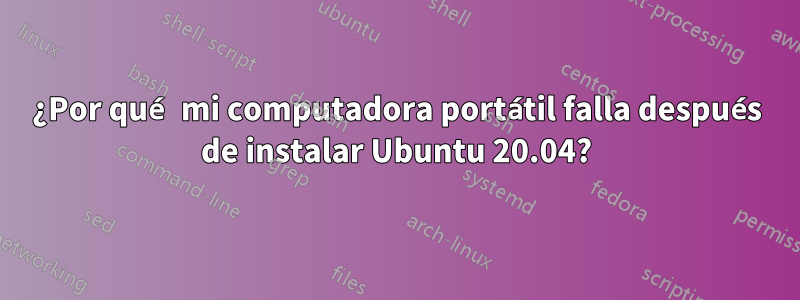
Después de instalar ubuntu 20.04 en mi dispositivo Windows Lenovo IdeaPad 320, me enfrento a múltiples problemas, como bloqueos y fallas del sistema.
Funciona normalmente pero de repente se cuelga y tengo que reiniciar la computadora. A veces, durante el arranque, aparece algún mensaje extraño.
Una cosa a tener en cuenta es que no aparece siempre. Además, a veces empeora y cuando intento reiniciar empieza a hacer ruido.
¿Cómo arreglar este problema? ¿Por qué Ubuntu no es compatible con mi dispositivo?
Respuesta1
Ubuntu 20.04 sigue siendo inestable.
Recomiendo entrar en las opciones de arranque.
Y cambie a otro modo si los errores provienen de los controladores, intente:
presione y mantenga presionada rápidamente la tecla Shift, que abrirá el menú GNU GRUB
Elija el modo de recuperación.
Seleccione una opción del menú y presione Entrar para usarla:
clean: Attempts to make free space on your file system. If your storage is full and this is causing some sort of problem, this can help free up space.
dpkg: Repairs broken software packages. If a package failed to install properly and your system doesn’t work because of it, this may help.
failsafeX: Boots your computer in a failsafe graphic mode. If there’s a problem with your Xorg graphical server configuration or graphics drivers and that’s causing your Ubuntu system to boot to a black screen or preventing the graphical desktop from loading properly, this can get you back to that graphical desktop.
fsck: Performs a file system check, which scans the computer’s file systems for errors and automatically fixes them. It’s a bit like chkdsk on Windows.
grub: Updates the GRUB boot loader. If you could use the GRUB boot loader to get to this menu, this option probably won’t help.
network: Enable networking, which is disabled by default in recovery mode.
root: Leaves the menu and goes to a root shell prompt. From here, you can mount the file system in write-mode and run commands that may help fix problems with the system. You should only do this if you know what you’re doing — it’s a way to fix the problem by hand if you know how.





